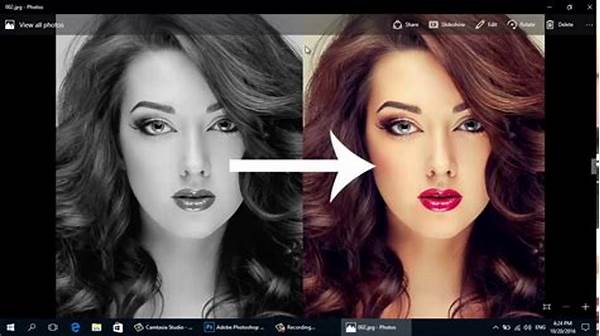Hey there, photography enthusiasts! Are you ready to dive into the world of black and white photography? It’s like taking a step back in time, where colors are stripped away to reveal the essence of your subject. Converting color photos to black and white is not just about hitting a filter button; it’s an art in itself. Let’s explore how you can transform those vibrant images into monochrome masterpieces.
Read Now : “photo Editing Software Recommendations”
Why Convert to Black and White?
Turning your color photos into black and white isn’t just a trend; it’s a classic move that brings out the raw beauty of your images. But why go monochrome in the first place? Well, black and white photos focus on composition, texture, and light in a way that color photos sometimes can’t. They bring out emotions and details that might get lost amidst vibrant hues. So, if you’re looking to create timeless pieces, mastering the art of black and white photography is essential. When it comes to tips for converting color photos to black and white, you want to pay close attention to contrast and lighting. These elements are crucial in black and white photography, as they help to define the form and depth of your image. Don’t forget to experiment with different filters and editing tools to find the perfect balance that suits your style and aesthetic.
Essential Tips for Getting it Right
1. Use the Right Software: Photo-editing software like Adobe Lightroom and Photoshop offer intricate control over your monochrome conversion.
2. Focus on Lighting and Contrast: Proper lighting elevates your black and white conversions by highlighting details and creating mood.
3. Pay Attention to Texture: Black and white images emphasize texture, so be sure to capture the intricate details!
4. Experiment with Filters: Use filters, both digital and physical, to experiment with shadow and tone.
5. Don’t Overdo It: Keep it simple. Too much editing can ruin the natural essence of a photo.
Play with Light and Shadows
Light and shadows are your new best friends when working in black and white. When you’re focusing on tips for converting color photos to black and white, remember that these elements can dramatically change the mood of an image. With color gone, shadows and light do the talking, and boy, do they have things to say! Without color to distract the viewer, shadows can help accentuate shapes and create drama that pulls the viewer in. Take advantage of natural light sources and play around with hard and soft light to see how they affect your composition. And don’t shy away from shadows—they add depth and mystery, giving your photos that extra pop!
Using Software for Conversion
Okay, you’ve shot some awesome color photos, but now it’s time to get down to business. Apps and software like Adobe Lightroom give you full control during the conversion process. You can tweak contrast, brightness, and even add a bit of grain for that vintage look. Software allows you to experiment safely, providing a whole playground of options to apply your tips for converting color photos to black and white. Some apps even offer preset filters that can give your images a starting point, but don’t stop there. Tweak and adjust meticulously to create that perfect composition that switches the focus from color to form, texture, and mood.
Picking the Right Subject
When you’re planning to convert color photos to black and white, choosing the right subject becomes vital. Look for scenes with compelling contrasts and textures to bring out the best in monochrome. Portraits with emotional expressions or landscapes with dynamic skies are classic choices.
Read Now : Animal Welfare In Research Protocols
Texture and Depth
Anyone can take a black and white photo, but not everyone can bring out the textures and depth. Study your subject, pay attention to surface details, and adjust your exposure to highlight these features when thinking of tips for converting color photos to black and white.
Capturing Emotion
Black and white photography is all about emotion. Without the distraction of color, your audience can focus on the feelings conveyed in the image. Whether it’s a joyous occasion or a somber moment, black and white can amplify those vibes.
The Beauty of Simplicity
Sometimes less is more. Black and white photos simplify the scene and strip down distractions. While following tips for converting color photos to black and white, don’t overcrowd your frame. Let the main subject breathe and speak for itself.
Detail is King
Always be aware of the details in your pictures. The magic of black and white photography lies in how it brings out minuscule details that may go unnoticed in color images. Capture and amplify these details during your conversion.
Finishing Touches
As with any form of art, the finishing touches can make all the difference. After converting your photo, examine it critically. Look for areas that need a little extra contrast or sharpening and bring them to life.
By now, you should feel pretty confident about jumping headfirst into the world of black and white photography. The tips for converting color photos to black and white aim to make the transition as smooth as possible. Happy snapping!



